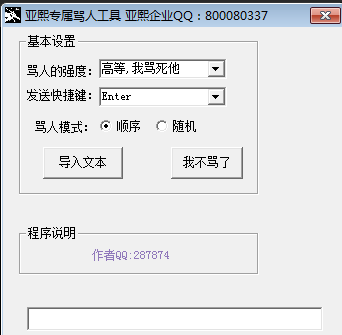bash/shell编程学习(2)
时间:2022-04-03 11:14
先来复习重定向的用法:
1.快速清空文件
cat demo.txt < /dev/null
注:linux中有一个经典名言【一切皆文件】,/dev/null可以认为是一个特殊的空文件,更形象点,可以理解为科幻片中的黑洞,任何信息重向定输出到它后,便有去无回,当然黑洞里也没有信息能出来。
综合来讲,上面的意思就是利用<将黑洞做为demo.txt的标准输入,黑洞里没任何内容,任何文件里的内容被它吞噬了,自然也没就没东西能剩下了,所以最终就是demo.txt被黑洞洗空了。
/dev/null 还有其它用法,比如用它可以让nohup不生成nohup.out文件,见:
2.执行时输出源码
#!/bin/bash -v printf ‘%0.2f\n‘ 12.12334
执行结果如下:
#!/bin/bash -v printf ‘%0.2f\n‘ 12.12334 12.12
注意:第3行输出结果之前,把源码也打印出来了,秘密在于第1行最后的 -v 参数
3.调试模式
#!/bin/bash -x printf ‘%0.2f\n‘ 12.12334 echo ‘hello‘
执行结果如下:
+ printf ‘%0.2f\n‘ 12.12334 12.12 + echo hello hello
注意:第一行后面的参数变成了-x,加上这个后,执行时,每一行代码在执行前,会先输出对应的源码,并且以+开头,十分方便调试。
4. if与test及[]
4.1 数字判断
#!/bin/bash -x i=$1 #变量i的值取第1个参数的值 if test $i -gt 89; then #如果i>89 echo ‘A‘ elif test $i -gt 79; then #如果i>79 echo ‘B‘ elif test $i -eq 60 -o $i -gt 60;then #如果i=60或i>60(即:i>=60) echo ‘C‘ elif test $i -gt 0;then #如果i>0 echo ‘D‘ elif test $i -lt 0;then #如果i<0 echo ‘invalid‘ else #i==0的情况 echo ‘zero‘ fi
注:if test 条件; then 语句 fi 这是基本格式,注意条件后的;不可省略,另外结束符号是fi(即:把if倒过来,有点回文的理念),另外要记住一堆缩写
-lt 即-Less Than的缩写,表示小于
-gt 即-Greater Than的缩写,表示大于
-eq 即-equal的缩写,表示等于,此外还有
-ne 即-Not Equal的缩写,表示不等于
-o 即-or,表示前后二个逻辑判断是『或』的关系,类似的
-a 即-and,表示前后二个逻辑判断是『与』的关系
elif 即else if的缩写
上面的示例运行结果:
./demo.sh 90 + i=90 + test 90 -gt 89 + echo A A
test语句还有一个简化的写法,即把"test 条件"变成" [ 条件 ] ",注意二端的方括号左右都要加一个空格,所以上面的写法可以改成:
i=$1 if [ $i -gt 89 ]; then echo ‘A‘ elif [ $i -gt 79 ]; then echo ‘B‘ elif [ $i -eq 60 -o $i -gt 60 ]; then echo ‘C‘ elif [ $i -gt 0 ]; then echo ‘D‘ elif [ $i -lt 0 ]; then echo ‘invalid‘ else echo ‘zero‘ fi
这样看起来就美观多了,如果不喜欢-o这种逻辑或的写法,第6行也可以换成这样
elif [ $i -eq 60 ] || [ $i -gt 60 ]; then
但是执行的细节略有区别,在调试模式下可以对比下,用||写法的输入(测试用例:61)
./demo2.sh 61 + i=61 + ‘[‘ 61 -gt 89 ‘]‘ + ‘[‘ 61 -gt 79 ‘]‘ + ‘[‘ 61 -eq 60 ‘]‘ + ‘[‘ 61 -gt 60 ‘]‘ + echo C C
而用-o写法的输出:
./demo2.sh 61 + i=61 + ‘[‘ 61 -gt 89 ‘]‘ + ‘[‘ 61 -gt 79 ‘]‘ + ‘[‘ 61 -eq 60 -o 61 -gt 60 ‘]‘ + echo C C
对比下5-6行可以发现,区别在于判断一次,还是判断二次
4.2 字符串判断
#!/bin/bash -x str1="abc" if [ -z "$str1" ]; then echo ‘str1 is empty‘ else echo ‘str1 is not empty‘ fi printf "\n" str2="" if [ -n "$str2" ]; then echo ‘str2 is not empty‘ else echo ‘str2 is empty‘ fi printf "\n" if [ "$str1" = "$str2" ]; then echo ‘str1 = str2‘ else echo ‘str1 <> str2‘ fi
注: -n即-not empty判断字符串非空,-z即-zero判断字符串为空,=判断字符串相同(判断字符串时,记得要加双引号)
运行结果:
+ str1=abc + ‘[‘ -z abc ‘]‘ + echo ‘str1 is not empty‘ str1 is not empty + printf ‘\n‘ + str2= + ‘[‘ -n ‘‘ ‘]‘ + echo ‘str2 is empty‘ str2 is empty + printf ‘\n‘ + ‘[‘ abc = ‘‘ ‘]‘ + echo ‘str1 <> str2‘ str1 <> str2
4.3 文件及目录判断
#!/bin/bash -x if [ -f ~/.bash_profile ]; then echo ‘~/.bash_profile is a file‘ else echo ‘~/.bash_profile is not a file‘ fi printf ‘\n‘ if [ -d ~/ ]; then echo ‘~/ is a directory‘ else echo ‘~/ is not a directory‘ fi
-f即判断是否为file, -d即判断是否为directory, 输出结果:
+ ‘[‘ -f /Users/yjmyzz/.bash_profile ‘]‘ + echo ‘~/.bash_profile is a file‘ ~/.bash_profile is a file + printf ‘\n‘ + ‘[‘ -d /Users/yjmyzz/ ‘]‘ + echo ‘~/ is a directory‘ ~/ is a directory



























